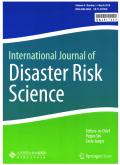A Comparative Analysis of Performance-Based Resilience Metrics via a Quantitative-Qualitative Combined Approach: Are We Measuring the Same Thing?
IF 4
2区 地球科学
Q2 GEOSCIENCES, MULTIDISCIPLINARY
引用次数: 0
Abstract
Abstract Since the proposal of the pioneering “resilience triangle” paradigm, various time-series performance-based metrics have been devised for resilience quantification. The numerous choices diversify the toolbox for measuring this compound system concept; however, this multiplicity causes intractable questions for applications, including “Do these metrics measure the same resilience?” and “Which one to pick under what circumstance?” In this study, we attempted to address these two fundamental issues using a comprehensive comparative investigation. Through a quantitative-qualitative combined approach, 12 popular performance-based resilience metrics are compared using empirical data from China’s aviation system under the disturbance of COVID-19. Quantitative results indicate that only 12 of the 66 metric pairs are strongly positively correlated and with no significant differences in quantification outcomes; qualitative results indicate that the majority of the metrics are based on different definition interpretations, basic components, and expression forms, and thus essentially measure different resilience. The advantages and disadvantages of each metric are comparatively discussed, and a “how to choose” guideline for metric users is proposed. This study is an introspective investigation of resilience quantification studies, aiming to offer a new perspective to scrutinize those benchmarking metrics.通过定量-定性结合方法对基于绩效的弹性指标进行比较分析:我们衡量的是同一件事吗?
自开创性的“弹性三角”范式提出以来,人们设计了各种基于时间序列绩效的弹性量化指标。测量这个复合系统概念的多种选择使工具箱多样化;然而,这种多样性给应用程序带来了棘手的问题,包括“这些度量是否度量相同的弹性?”以及“在什么情况下选择哪一个?”在本研究中,我们试图通过全面的比较调查来解决这两个基本问题。采用定量定性相结合的方法,利用新冠肺炎疫情下中国航空系统的经验数据,对12个流行的基于绩效的弹性指标进行了比较。定量结果表明,66个指标对中只有12个呈强正相关,且量化结果无显著差异;定性结果表明,大多数度量基于不同的定义解释、基本组成部分和表达形式,因此本质上度量不同的弹性。比较讨论了各种度量的优缺点,并为度量用户提出了“如何选择”的指导方针。本研究是对弹性量化研究的内省调查,旨在提供一个新的视角来审视这些基准指标。
本文章由计算机程序翻译,如有差异,请以英文原文为准。
求助全文
约1分钟内获得全文
求助全文
来源期刊

International Journal of Disaster Risk Science
GEOSCIENCES, MULTIDISCIPLINARYMETEOROLOGY-METEOROLOGY & ATMOSPHERIC SCIENCES
CiteScore
6.50
自引率
7.50%
发文量
63
审稿时长
13 weeks
期刊介绍:
The International Journal of Disaster Risk Science (IJDRS) provides a pioneering platform for researchers and practitioners aiming at greater resilience and integrated risk governance in view of local, regional, and global disasters. IJDRS breaks new ground in research about disaster risks by connecting in-depth studies of actual disasters and of specific practices of disaster risk management with investigations of the global dynamics of disaster risks and theories and models relevant for advanced integrated risk governance.
 求助内容:
求助内容: 应助结果提醒方式:
应助结果提醒方式:


